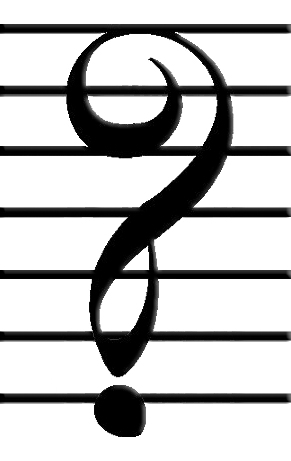
I’ve posted the link to the audio at the end of this review, but I would love for you to check out the review first, listen, and then let me know what you think.
I’ve been listening to every ’82 show I can get my hands on, and thanks to the Internet Archive, and specifically, their “Dead Zone”, I can stream these shows, and I often have a selection of several versions of the same show to choose from. Back to 1982… ’82 is a really hot year that sort of gets forgotten between the big years of ’77 and ’85, but it is fantastic music that should be heard. The band seems fresh, and they have a couple of things going for them that the 2 big years above weren’t able to afford them.
In ’77 (and ’78 to a larger extent) the Godchauxs were weighing the band down. Donna for one reason or another (there are lots of arguments in her defense as well as arguments against her) Donna became very shrill, and Keith’s grand piano had locked the band into a place that made it difficult for them to be dynamic and evolutionary. Besides, Keith’s battle with alcohol had made him little more than a sleeping fixture on stage.
In mid ’79, Brent Mydland essentially filled the spot that both Godchauxs had occupied, and came in with not only a new sound vocally, but he supplied a new array of sounds on the keys that really allowed the band to explore the bounds that they had previously occupied. Although 12/01/79 is one of my all-time favorites, it really did take a couple of years for Brent to really settle-in and find his space in the music and probably took as long for the band understand where he was in the music as well. It is interesting to note that in the previous Spring tour, Jerry had switched sides on the stage with Phil on 04/02/82 in order to be next to Brent, a position he would remain in while on stage for the duration.
Back to the concert… What a show! I’m a sucker for Jack Straw shows, and maybe I’m a total geek, but I’ve even got a Great Northern t-shirt. The band is listening to each other, and playing well together. The Jack Straw pleases, the Sugaree is fantastic, Cassidy hits those outer limits but brings it all back home, but that Cumberland Blues simply blisters–it is definitely one of the good ones that I asked about in a previous post about best versions/performances of Dead songs.
I was a bit worried when I saw the Lazy Lightning, but from the first notes, you realize that this isn’t 1985 where they play it much faster than their ability to make it sound any good. This one cooks and satisfies, and so does the Deal to end the first set. I love a good Deal first set ender.
In typical fashion, a first set starting with Jack Straw is coupled with a second set starting with China>>>Rider, and this one has all the components you would want. This is a good one to listen to in order to get a feel of the band. There is so much energy brewing here, but it’s all about how well it is harnessed. In fact, and I’m not the first to say this, but the recurring train theme in Dead music is the perfect metaphor for the band–so much power moving on its own and the question is, how to control it. Sometimes you just have to hold on, sit back and enjoy the ride.
Women Are Smarter is fun, Never Trust a Woman showcasing Brent’s personality is gritty, and the Lost Sailor>>>Saint of Circumstance is right on the money. They explore, and as you’ll find typical of this particular show, they all coalesce around that emotionally climactic rallying-point in the music. Again, you may not always know where you are within the context of the music, but you have the confidence that the band will help pull you out of it and allow you to make some sense of where the music has taken you.
He’s Gone, a usual jumping-off point, helps propel this one into that second half of the second set otherworldly realm and dumps you off into a short drums and then into space. I agree with folks who say that Not Fade Away should pull out of space rather than end the show, and that’s exactly what happens here. Maneuvering out of the fog, they give form to chaos, and before you know it, you are listening to the old familiar cadence of Not Fade Away, and it feels good. Brent’s organ swirls while Jerry’s guitar shreds and Bob finds those funny angles in the music; all the while Phil is dropping sonic bombs and Mickey and Billy are laying down a gauntlet.
Once they’ve squeezed that one for every drop, they send you off on an up-tempo Wharf Rat. I cannot stress this enough, but the Dead understood the power of silence as well as the power of volume, and it is readily apparent in this one. They are spot-on in this version instrumentally, and their harmonies are quite good–again, a fact that owes a great deal to bandmates listening to each other. Another aspect of the band that this song tells about is the overall physical condition of the band. In later years when Jerry ballooned-up, he would absolutely struggle through this song, typically placed late in the second set, and it would be dreadfully evident in his vocals. This one is very nice.
The Around and Around is, well, it’s Around and Around, and although the Good Lovin’ starts a little shaky, it settles down and yields a really nice Bob rap and build-up to the end. The U.S. Blues encore is a nice one to hear and is a great exclamation point to this show, and this is not just a mail-it-in encore either; these guys are still at work, and you can tell by the crowd bleed-in through the mics that the crowd loves it. This encore is a real thankyou from the band to the crowd–the band loves it too.
All in all, this is a fantastic show. Sure you will find problems with it, but this show comes from a time when they were playing really well and enjoying themselves. I would definitely recommend checking this show out as well as challenge you to listen to that whole ’82 – ’83 period and weigh it against what might be your favorite period. This is good stuff and it rocks. Here is the link (enjoy, and again, let me know what you think, and while you’re at it, tell me what YOU are listening to):
http://www.archive.org/details/gd82-05-22.sbd.gorinsky.5215.sbeok.shnf
Proving once again that we do more than just show you the best deals in the Phoenix real estate market; we show you how to get the most out of living in Arizona, and try to help you get the most out of what you are listening to.
Filed under: Concert Reviews, Live Music Resources | Tagged: arizona, arizona music, arizona music blog, Arizona music blogs, arizona premiere living, arizona premiere music, bands, blogs, concerts, dead show, grateful dead, live music, living in Arizona, music, music blogs, music review, Phoenix, phoenix real estate | Leave a comment »




 First let me say that it’s been a while since I’ve reviewed any music, let alone, The Dead, but I recently listened to a really hot show–one that intend to review soon. This show really catches this band in their prime, but in order to define ‘prime’ it is important to note that The Dead had several primes, and this just happens to be one of them.
First let me say that it’s been a while since I’ve reviewed any music, let alone, The Dead, but I recently listened to a really hot show–one that intend to review soon. This show really catches this band in their prime, but in order to define ‘prime’ it is important to note that The Dead had several primes, and this just happens to be one of them.



 Carlos has graced our stages and airwaves for over 40 years now. Starting out as a teenage kid playing guitar in the Mission District of San Francisco, Carlos was influenced by a menagerie of musical tastes ranging from Salsa, Jazz and Rock. Over the past 40 years his music has evolved with the times and he has remained as relevant as ever. In my opinion though his signature moment was at Woodstock, where he was still a bit of an unknown on the national stage. Woodstock would change all that. I’ve added a link to a clip from Woodstock where Santana really rips it up :
Carlos has graced our stages and airwaves for over 40 years now. Starting out as a teenage kid playing guitar in the Mission District of San Francisco, Carlos was influenced by a menagerie of musical tastes ranging from Salsa, Jazz and Rock. Over the past 40 years his music has evolved with the times and he has remained as relevant as ever. In my opinion though his signature moment was at Woodstock, where he was still a bit of an unknown on the national stage. Woodstock would change all that. I’ve added a link to a clip from Woodstock where Santana really rips it up : Tres – Linda Ronstadt. Yes, Linda Ronstadt. Although througout most of her career she was a rocker Ronstadt expressed her hispanic background later in life with her album “Canciones de mi Padre”. She was a double threat in that she was a pioneer for female rockers and Mexican American pop artists as well
Tres – Linda Ronstadt. Yes, Linda Ronstadt. Although througout most of her career she was a rocker Ronstadt expressed her hispanic background later in life with her album “Canciones de mi Padre”. She was a double threat in that she was a pioneer for female rockers and Mexican American pop artists as well Numero Cinco – Cypress Hill. You probably think I’m Insane in the Membrane for putting this group on the list. But if you’ve been following this blog for very long you know we have a sense of humor here at Arizona Premiere Music. I mean, come on Esse, don’t you know I’m loco? Plus, Cypress Hill is the premiere hispanic hip hop group selling 18 million records worldwide. Here’s an example, just a little sample of the Hill’s lyrical prowesss:
Numero Cinco – Cypress Hill. You probably think I’m Insane in the Membrane for putting this group on the list. But if you’ve been following this blog for very long you know we have a sense of humor here at Arizona Premiere Music. I mean, come on Esse, don’t you know I’m loco? Plus, Cypress Hill is the premiere hispanic hip hop group selling 18 million records worldwide. Here’s an example, just a little sample of the Hill’s lyrical prowesss: